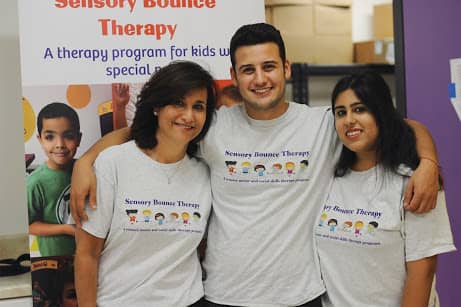My Child Was Diagnosed with Sensory Processing Disorder
Sensory processing, the basics
Let’s start with the most fundamental definition of sensory processing, also
called sensory integration. Sensory processing is the way in which our brain
acquires information from our senses and arranges/organizes/interprets it so we
can respond in an appropriate, effective, and meaningful way. Sensory
processing provides the foundation for more complex learning and behavior.
What is Sensory Integration Disorder (SID) / Sensory Processing Disorder (SPD)?
This means there are difficulties processing sensory input which affect
functioning in day to day life. Our most influential sensory developmental time
takes place before the age of seven, and happens naturally while we go about
ordinary childhood activities.
For most of us, distinguishing between different sensory experiences — such
as sight, sound, touch, taste, smell, balance, movement, and body in space
awareness — happens unconsciously without our thinking about it. We receive
messages from our senses and respond automatically to the information. For
example, we filter out extraneous noises so we can focus on a book; we don’t
notice how a chair feels under us; we don’t have to concentrate to keep
ourselves balanced; we pull our hand away from a hot flame; we step down off a
curb.
But all this can’t happen automatically if the central nervous system has
difficulty accurately perceiving or integrating the information it receives. If
the neurological process becomes disrupted somewhere in the loop of intake,
organization or output, then normal development and adaptive responses will not
occur. The result of this disruption is Sensory Integration Disorder (SID) /
Sensory Processing Disorder (SPD). Learning, speech, motor skills, physical and
emotional development, adapting to sensations and situations, regulating
emotions, behavior, etc. may be impacted.
What does that mean for my child?
Since efficient sensory processing is necessary for a child to navigate
successfully in daily academic, home and social life, your child may not be
able to respond to sensory information in an automatic manner that is
appropriate to the situation. The “primitive” brain takes over and causes
either a “fright, flight, or fight” or a withdrawal response, either of which
often is extreme for an ordinary situation. For example, a child who can’t tell
what truly is frightening may scream and run if someone tries to take her hand,
or may obliviously walk out into traffic — both are inappropriate responses.
What conditions are associated with SID/SPD?
1,Autistic spectrum disorders
2,ADD / ADHD
3,Learning disabilities
4,Genetic disorders
5,Developmental delays
6,Behavioral challenges
7,Premature birth
How is SID/SPD diagnosed?
A qualified occupational or physical therapist can perform an evaluation
using a sensory history, standardized testing and clinical observations.
How is SID/SPD treated?
Occupational therapists provide sensory integration therapy to meet the
individual needs of each child and his/her particular nervous system, providing
the sensory experiences that are most helpful to that child.
Conclusion:
Sensory Processing Disorder
is a condition stuck in an unfortunate situation receiving and responding to
information that comes in through the senses. Sensory Bounce Therapy program
focuses intensely on social abilities improvement. Join this program now.
Read Also: Super Easy Ways to Learn Everything about Autism Therapies




Comments
Post a Comment